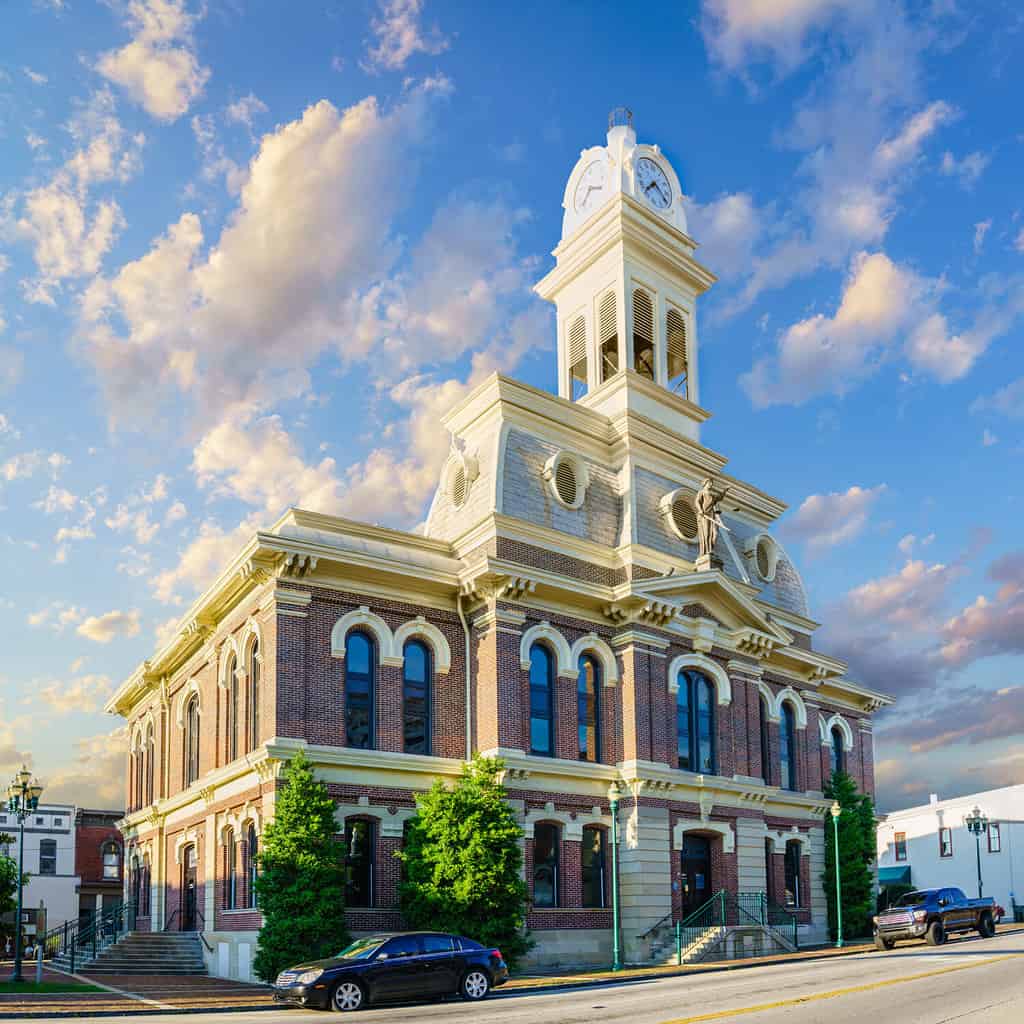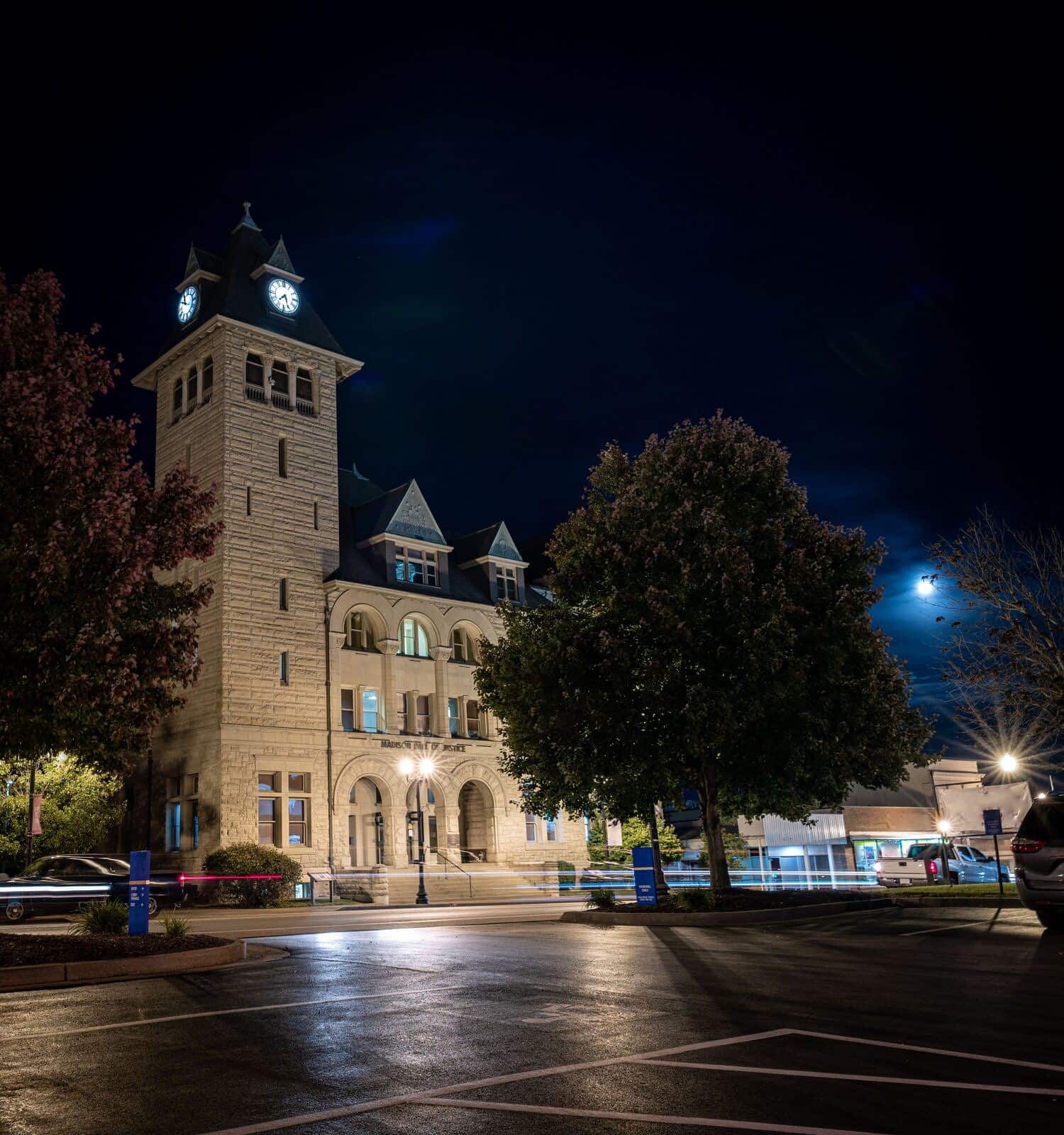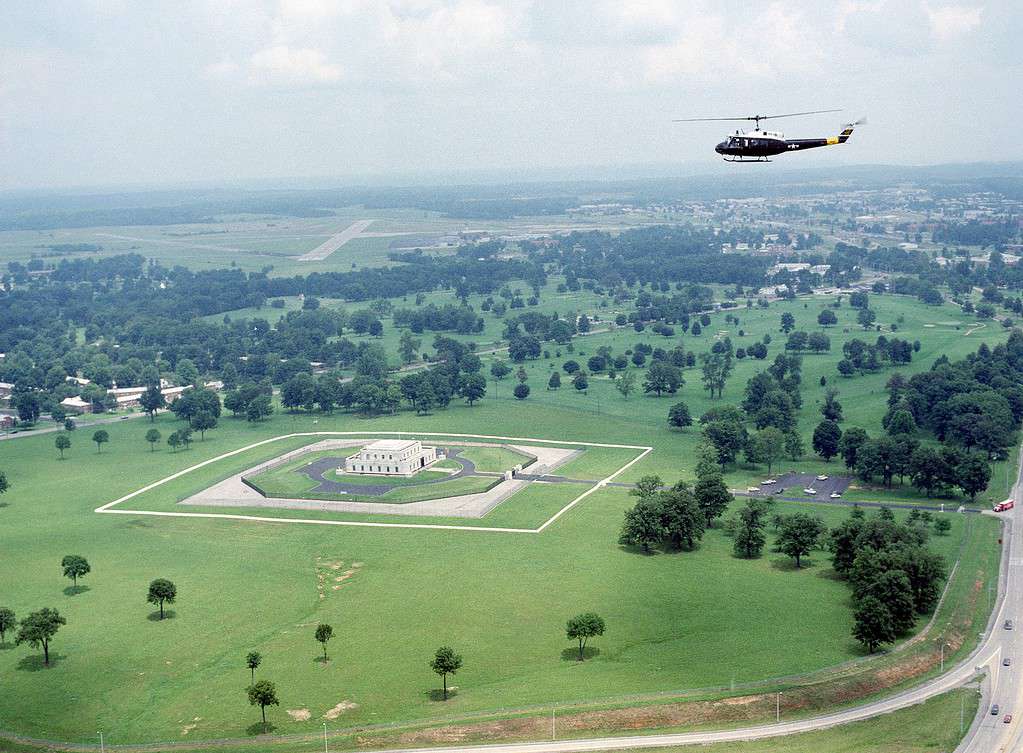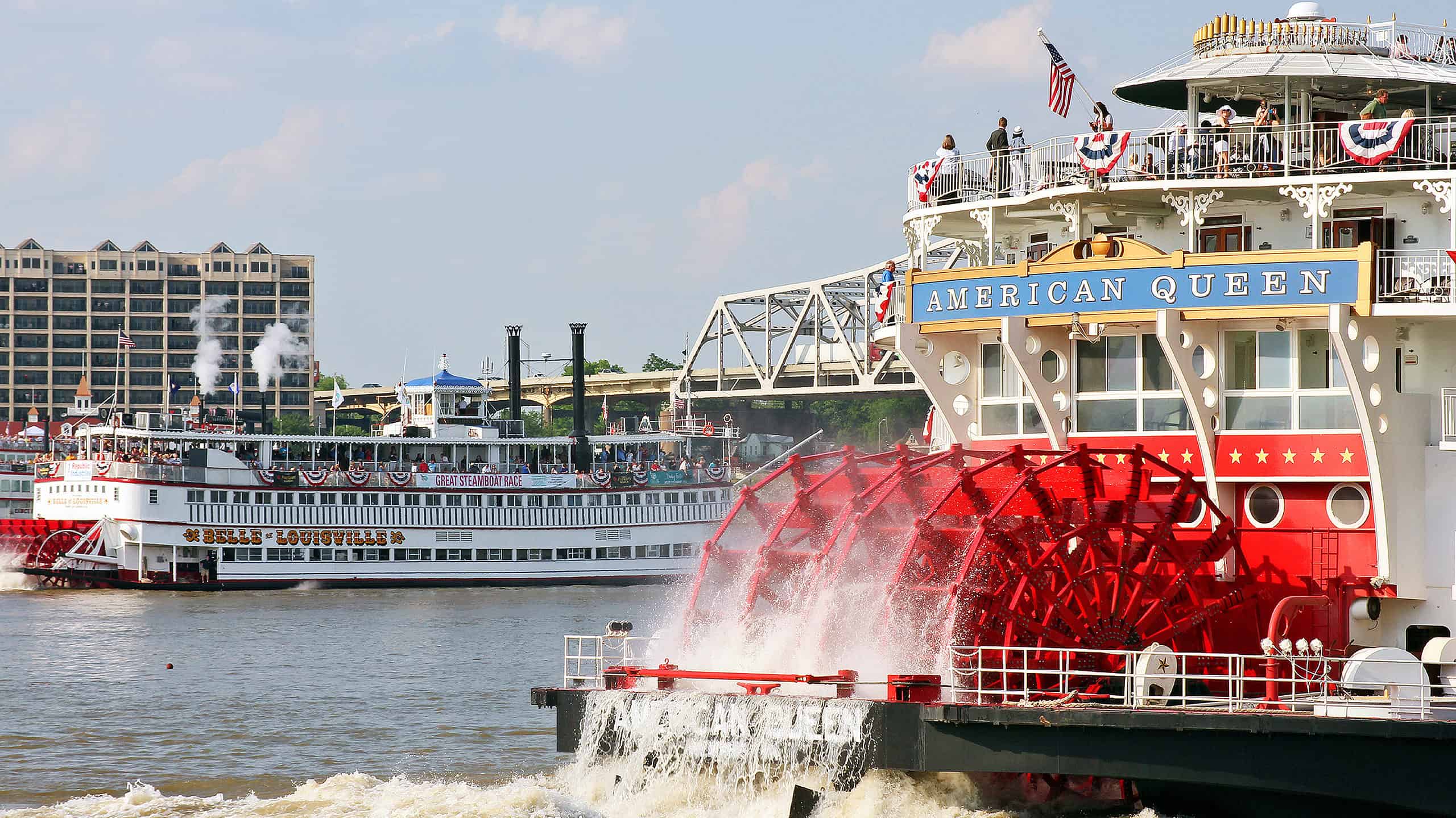Renowned for America’s most famous horse race, bluegrass, and the Appalachian Mountains, Kentucky boasts 4.5 million residents throughout 120 counties.
The U.S. decennial census shows the population difference between the 10 fastest-growing counties in Kentucky between 2010-20. The numeric and percentage change in Kentucky’s fastest-growing counties start with Jefferson and end with Daviess. The census breaks down race, ethnicity, age, housing, and population as the defining growth factor.
A-Z Animals gives a brief synopsis of each county seat and surrounding education systems, forms of government, and employers that drive the local economy, all of which offer possible reasons for growth. While most counties share similarities, including mainly White populations and large school and government systems that employ thousands of locals, others do not. All counties share the same form of school government with a superintendent and elected board members. The 10 fastest-growing counties also share high-scoring grades from Niche for their school systems.
Kentucky has two types of city government, which differ among counties. Some cities consist of the mayor-alderman form comprising an executive or legislative body of judges, magistrates, or constables for many towns. There is also the home rule form of government based on a local constitution overseen by a mayor and council, city manager, or commissioners.
Learn more about Kentucky’s 10 fastest-growing counties and some fun facts behind them, including how they got their name and the year they formed.
1. Jefferson County – 41,873 or 5.7%

Slugger Museum in Louisville houses the biggest bat in the world.
©Nick Forsberg/Shutterstock.com
Jefferson County got its name from the third U.S. President Thomas Jefferson.
The county seat of Louisville boasts Muhammad Ali’s birthplace and the Kentucky Derby Museum, where you can find answers to questions like why people wear the big funky hats at the horse race. Before it became a fashion statement, it was to protect patrons from the sun. Louisville also has the tallest building in Kentucky.
Jefferson was one of the first counties in the Bluegrass State. It became a county in 1780. Jefferson County’s population is 70.3% White and 23.2% Black or African American, with minimal percentages for Asian, American Indian, or Hispanic. Up to 21.8% of the populace is under 18, and 17.6% is over 65. Up to 86.8% of residents own homes in Jefferson.
Some major employers in Jefferson County are the U.S. Postal Service and Jefferson County Schools. Baptist Healthcare System, Humana, and the University of Louisville Health employ thousands. The mayor of Louisville Metro leads the regional government with elected council members. The Jefferson County School District has a superintendent and seven board of education members who oversee dozens of schools in all grade levels. Niche gives the district a B.
2. Fayette County – 26,767 or 9.0%

Lexington makes the most peanut butter in the world at the Jif facility.
Fayette County got its name after Marquis de Lafayette, one of France’s biggest advocates during the American Revolution.
This central Kentucky county government seat is Lexington. Fayette is also one of the first Kentucky counties to form in 1780. As the “Horse Capital of the World,” Fayette County’s population is 76% White and 16.2% Black or African American. Up to 20.4% of the populace is under 18 years old, and 15.2% is over 65. There are extremely low percentages of Asian, American Indian, and Hispanic populations. Up to 54.1% of residents own their home in Fayette, one of Kentucky’s fastest-growing counties.
Top employers in the county include education, with the University of Kentucky and Fayette County Public Schools in the top five for the region. Lexington-Fayette Urban County Government also acts as a leading employer in the area, which follows a mayor and council hierarchy. A superintendent and five school board members lead the school system of several elementary, middle, and high schools. Niche gives Fayette County Public Schools an A-.
3. Warren County – 20,762 or 18.2%

Bowling Green is the global headquarters for Fruit of the Loom underwear.
©Warszawska róg Szerokiej w Tomaszowie Mazowieckim / CC0 – Original / License
Warren County got its name from General Joseph Warren, the leader who sent Paul Revere to warn settlers the British were coming on that famous midnight ride through Lexington.
Warren County got its name from General Joseph Warren, the leader who sent Paul Revere to warn settlers the British were coming on that famous midnight ride through Lexington.
Home to Duncan Hines, one of America’s favorite cake batters, Warren County boasts Bowling Green as the county seat. In 1797, it became a county. The White population at 81% dominates the demographic, with only 9.8% Black or African American, 5.4% Asian and 5.9% Hispanic. Almost a quarter of the population is under 18, at 23.1%. There is a 13.6% population over the age of 65. Up to 57.4% of residents own their homes in Warren.
There are six district magistrates and one executive judge governing Warren. Top employers in the region are Western Kentucky University, the Medical Center at Bowling Green, and the Warren County Board of Education. There are five school board members and a superintendent in the school system. Warren County Public Schools has over a dozen elementary schools, four middle schools, and four high schools. Niche gives Warren County Public Schools a B.
4. Boone County – 17,157 or 14.4%

Burlington boasts the Rabbit Hash General Store, listed on the National Register of Historic Places, for the nostalgic store off a windy Kentucky road.
Boone County got its name after famous American pioneer and explorer Daniel Boone.
Boone is the largest bend of the Ohio River, where gravel and limestone deposits remain from long-ago glacial activity. Burlington is the government seat of the county, founded in 1799 and located in the northern part of the state. The population of Boone County is 85.9% White and 5% Black or African American, with 25.1% of the people under 18 and 15% over 65. Up to 76.9% of residents own their home in Boone.
Home to the Cincinnati/Northern Kentucky Airport, Boone County boasts thousands of jobs. Another major employer in Boone County is the local government, led by an executive judge and a board of commissioners. Unlike other counties, Boone has a superintendent, five elected school board members, and one non-voting student board member. Boone County School District is the third largest in the state, comprising more than a dozen elementary, six middle, and four high schools. Niche gives Boone County School District a B.
5. Scott County – 9,982 or 21.2%

Georgetown is the disputed birthplace of bourbon in the state famous for the warm whiskey.
©Alexey Stiop/Shutterstock.com
Scott County got its name after General Charles Scott, war hero and fourth governor of the state.
Located in central Kentucky and founded in 1792, Scott County’s government seat is Georgetown, known for its proximity to famous racetracks and breeders in Lexington. Like other Kentucky counties, Scott is nearly all White at 90%, with a 5.8% Black or African American population. There are 24.1% of locals under the age of 18. There is a 13.2% population of residents over the age of 65. Up to 72.5% of residents own their home in Scott.
Toyota is the top employer in this fast-growing county, offering thousands of jobs to locals here. Scott County Public Schools and Georgetown College both educate and employ locals. The county government comprises a judge and seven magistrates, and Georgetown implements a mayor and council hierarchy. Unlike other fast-growing county school systems, Scott has one superintendent, three assistant superintendents, and five school board members. Scott County Public Schools has less than a dozen elementary schools and a handful of middle and high schools. Niche gives Scott County Public Schools a B-.
6. Madison County – 9,785 or 11.8%

The county courthouse in Richmond was built in 1850 and is a member of the National Register of Historic Places.
©Ivelin Denev/Shutterstock.com
Madison County got its name after the fourth U.S. President James Madison.
The Madison County seat is Richmond. The county is in central Kentucky, below Fayette County, bordered by the Kentucky River. The population of Madison is mostly White at 91.5%, 4.4% Black or African American, and 2.9% Hispanic. Like other top 10 fastest-growing counties in Kentucky, the younger generation dominates the older, with 20.9% under 18 and 14.8% over 65. Up to 60.7.5% of residents own their home in Madison.
Eastern Kentucky University is in Madison, and Madison County School District contributes to the strong education system and economy. Other big employers in Madison include manufacturing, distribution, and warehouse businesses. As the county seat, Richmond operates with a city manager. There is also an elected mayor and commission members. Madison County School District, governed by one superintendent and five board of education members, has several schools, from elementary to high school. Niche gives Madison County School District a B.
7. Kenton County – 9,344 or 5.9%

The Simon Kenton Memorial Bridge connects Aberdeen, OH, to Maysville, KY, over the Ohio River.
©Clairness/Shutterstock.com
Kenton County got its name after pioneer and explorer Simon Kenton.
Found in 1840, Kenton County is in north Kentucky. Unlike the other top 10 fastest counties, Kenton has two county seats: the City of Independence and Covington. Like all the other fast-growing Bluegrass regions, the predominant population of Kenton County is White at 90.6%, with a 5.1% Black or African American Population. Consistent with other counties, Kenton has fewer elderly than youth in the region, with 22.9% under 18 and 15.9% over 65. Up to 67.9% of residents own their home in Kenton.
Top employers in Kenton County are in the food, manufacturing, and logistics sectors. Kenton boasts a fun fact as the home to the candymaker for Airheads. Another significant employer in the region is St. Elizabeth Medical Center. Covington’s form of government falls under a city manager, and a mayor and council lead the City of Independence. Like many other Kentucky counties listed, Kenton County Public Schools has one superintendent and five board members. The system has around a dozen elementary schools, four middle schools, and three high schools. Niche gives Kenton County Public Schools a B.
8. Bullitt County – 7,898 – or 10.6%

One fifth of the county’s space is occupied by Fort Knox, which is home to nearly $200 billion in gold bars.
Bullitt County got its name after Alexander Scott Bullitt, a politician who helped form the state of Kentucky.
Just south of the Ohio River and founded in 1797, Bullitt County is the birthplace of the Jim Beam Distillery. Some say the region is the beginning of the Bourbon Trail. Shepherdsville is the county seat. Of all the fastest-growing Kentucky Counties, Bullitt has the slightest Black or African American population at 1.8%. The White population is 95.2%, and the Hispanic populace is 3.1%. This county has a closer ratio of young and old residents, with 21% under the age of 18 and 17.6% over the age of 65. Up to 81.2% of residents own their home in Bullitt.
Top employers in Bullitt include food and retail businesses, including Amazon and Best Buy Warehousing Logistics. In the county seat of Shepherdsville, there is a mayor and council; on the county level, there is an executive judge, four magistrates, and four constable-governed districts. This county school system has a superintendent and five district chair members instead of school board members. The Bullitt County School System has over a dozen elementary schools, five middle schools, and three high schools. Niche gives Kenton County Public Schools a C+.
9. Oldham County – 7,291 or 12.1%

Kentucky’s wealthiest and most educated county, Oldham is the birthplace of director D.W. Griffith (Birth of a Nation), seen with actresses Dorothy and Lillian Gish visiting the White House.
Oldham County got its name from Colonel William Oldham, an early pioneer, and captain in the American Revolution.
This county, founded in 1823 in the north-central part of the state, touts being the wealthiest in Kentucky. The county seat is La Grange. The White population rules at 91.2%, and the Black or African American populace is 4.4%, nearly the same ratio as Hispanics at 4.3%. There are 24.4% locals under 18 and 14.7% over 65. Up to 86.8% of residents own their home in Oldham.
One of the county’s largest employers is the Rawlings Group, an insurance collection company. Baptist Health, the only hospital in the region, also contributes to a strong economy. Oldham has a county commissioner, an executive judge, and eight county magistrates. A superintendent and five district chairpersons oversee the system comprising under a dozen elementary schools and a handful of middle and high schools in the top-rated education district. Niche gives Oldham County Public Schools an A.
10. Daviess County – 6,656 or 6.9%

The Blue Bridge, also known as the Glover Cary Bridge for the former Kentucky Congressman, connects Owensboro to Spencer, IN, since its opening in 1940.
©Steve Wiltsie/Shutterstock.com
Daviess County got its name after Major Joseph Hamilton Daveiss, who died fighting in battle for the Kentucky Militia in 1811.
The fast-growing county drew its name as a spelling error, with the state’s clerk misspelling the last name of Major Joseph Hamilton Daveiss. Owensboro is the government seat for the county, formed in 1815. The Ohio River runs through the county seat in the northwest section of Kentucky. Hearing string band music throughout Owensboro is a definite thing as the Bluegrass Capital. Daviess County, which rounds out the 10 fastest-growing counties, has a high White population of 89.9% and a slight Black or African American populace of 5.1%. There is a 2.3% Asian population and 3.6% Hispanic. Up to 24.1% of the population is under 18 and 18.1% is over 65. Up to 67.8% of residents own their homes in Daviess.
Top employers in the region are Owensboro Health, U.S. Bank Home Mortgage, and Glenmore Distilleries. Three judges and three constables govern the area. Daviess County Public Schools is similar to Scott, with one superintendent, three assistant superintendents, and five district chairpersons. The district has over a dozen elementary schools and a few middle and high schools. Niche gives the district a B+.
| Rank | County | 2020 Population | 2010-20 Population Increase | Percent increase |
|---|---|---|---|---|
| 1. | Jefferson | 782,969 | 41,873 | 5.7% |
| 2. | Fayette | 322,570 | 26,767 | 9.0% |
| 3. | Warren | 134,554 | 20,762 | 18.2% |
| 4. | Boone | 135,968 | 17,157 | 14.4% |
| 5. | Scott | 57,155 | 9,982 | 21.2% |
| 6. | Madison | 92,701 | 9,785 | 11.8% |
| 7. | Kenton | 169,064 | 9,334 | 5.9% |
| 8. | Bullitt | 82,217 | 7,898 | 10.6% |
| 9. | Oldham | 67,607 | 7,291 | 12.1% |
| 10. | Daviess | 103,312 | 6,656 | 6.9% |
Thank you for reading! Have some feedback for us? Contact the AZ Animals editorial team.








